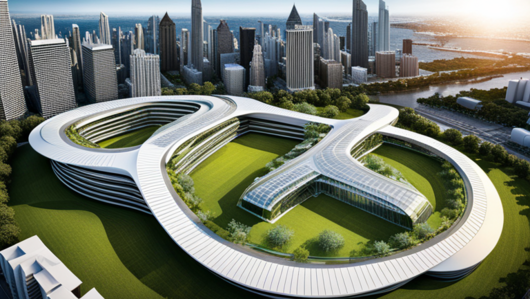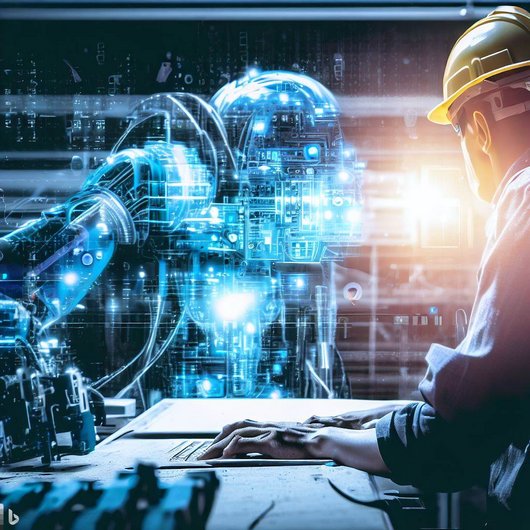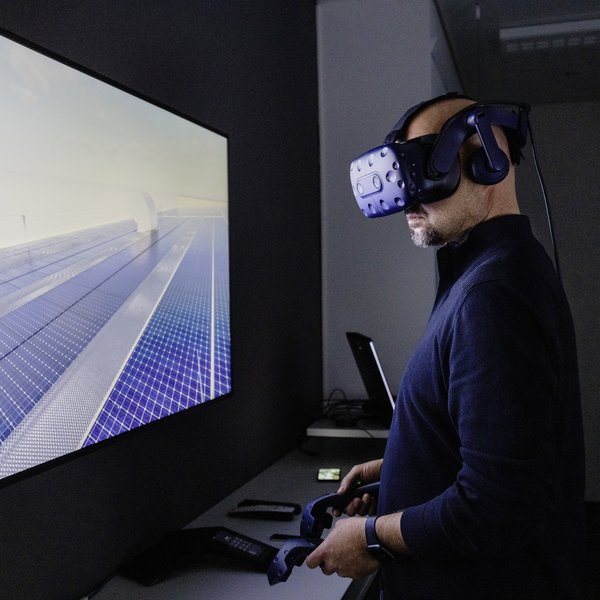

Artificial Intelligence is revolutionising construction
The job: A new residential complex. The energy supply is to be integrated into the renewable smart grid of the adjacent buildings. Ample green space, barrier-free access, charging stations for e-bikes, unoverlooked balconies and communal meeting points are just some of the other requirements. So far, so good. But now imagine that for planning you need the realistic key data – i.e. the size of the plot, residential units required, open spaces and so on. Once an AI has been fed this data, it spits out several designs within minutes – for example, the most energy-efficient, the most cost-effective, and the most environmentally sound variant or the one with the longest life span. The method of finding the best option from many variants of a model is only possible or efficient with digital help. The technical term for this is generative design.
Lower costs, faster processing
For a real residential construction project, the AI project management system ALICE created 300 alternative scenarios in four days. “Seven of them were superior to the original. It reduced the length of the project by 18%. Cost reductions of 15% were also achieved”, said the Fraunhofer Institute in its study on AI in the construction industry. In essence, AI forecasts draw on existing databases that automate, combine and evaluate statistical algorithms. Once the construction plans are ready and all questions have been clarified and all (construction) materials selected, the AI can get started on the logistics: From obtaining quotations from subcontractors and ordering the materials to coordinating deliveries and trades. The prerequisite for this brave new world is that all interfaces are networked and the data is not only entered but also continuously updated. The fact that digitalisation from the planning phase to the construction site is no longer a pipe dream is amply demonstrated by the PORR project for the general refurbishment of the A9 Pyhrnautobahn for ASFINAG. This makes use of the Building Information Cloud by Infrakit, an online-based digitalisation platform from Finland. It gives a visual overview of all construction-relevant data. Digital solutions like BauProzessOptimierung ensure logistics processes are optimised as well. And artificial intelligence also has an important role to play, of course. "Construction is a complex topic, AI will help us in the construction industry to benefit from a lot of information - to recognise risks, learn from experience and identify optimisation potential. But it is not possible without specialist knowledge and competent experts to evaluate this information. At PORR, we are currently conducting pilot projects with selected construction site teams to learn the targeted use of AI," says Karina Schiefer, Head of Innovation Management at PORR AG.


Next-level safety
When we get to the actual construction site, AI can play a big part in increasing safety. Smart sensors for object recognition and classification can identify unprotected danger zones – such as missing safety nets, slippery patches or improperly erected scaffolding. Surveys can also be carried out in high-risk areas without human assistance thanks to smart technologies. As can warnings of imminent collisions between people, vehicles and other machines. Of course, building materials and parts are also becoming more intelligent. Built-in digital sensors sound the alarm, for example, when cracks in concrete become too large or wood becomes too damp – in storage, during construction and while the building is subsequently in use. In addition to monitoring technology and materials that send alerts in the event of damage or danger, intelligent systems and sensors can also aid facility management in terms of energy efficiency. It has long been common to automate heating and cooling, but conventional systems have only been limited in the extent to which they can consider environmental influences and individual needs. In comparison, AI systems are much more flexible and they are capable of learning independently based on actual user behaviour.
Here to stay
Last but not least: AI also promises to be an important support tool in the personnel management of construction companies in the future. Whether in the search for suitable skilled workers, for planning training and further education or for recording hours worked and managing payroll. Whichever way you look at it, AI is here to stay. Even if there are still limits: The AI programme ChatGPT, when asked about the limits of AI in the construction industry, spits out the following answer: “AI systems are not able to understand or respond appropriately to human emotions or empathy. In the construction industry, there may be situations where interpersonal communication and emotional understanding play an important role, for example in negotiations, conflict resolution or customer service”. So when it comes to social interaction and customer relations, AI won’t be able to match humans any time soon. A friendly smile, sense of the absurdity of a situation or inside jokes cannot be written into an algorithm and neither can compassionate words or an appreciative glance.
ChatGPT also sees weaknesses in creativity and design aesthetics: “Although AI can help with design, it often lacks an understanding of aesthetics and the creative process. Designing buildings and urban planning projects often requires human expertise to develop solutions that are aesthetically pleasing and well thought out in terms of functionality”. So, humans will not be rendered utterly irrelevant any time soon.




![[Translate to Englisch:] (c) PORR [Translate to Englisch:] (c) PORR](/fileadmin/_processed_/3/3/csm_5V5A3742_4c8554371e.jpg)